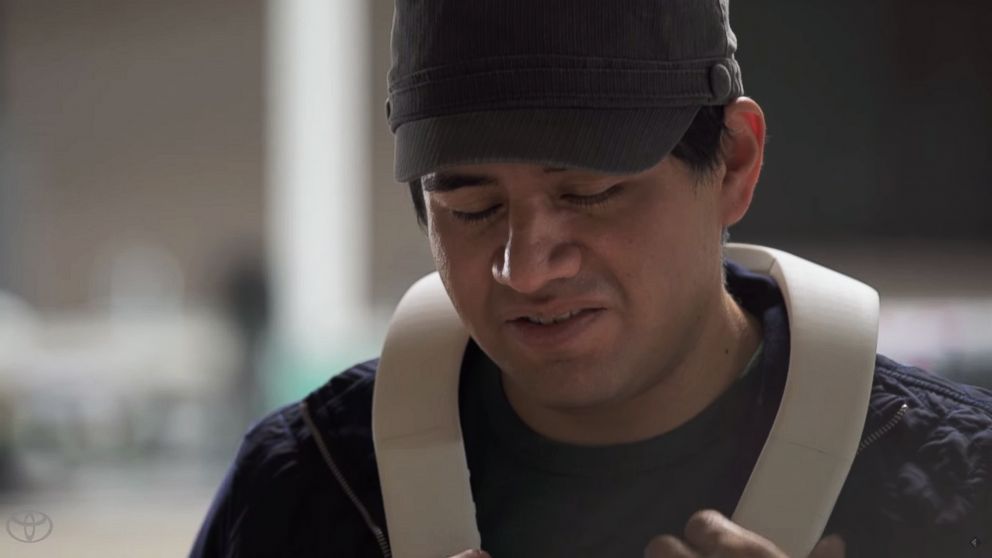Toyota's Wearable Device for the Blind Can Recognize Surroundings
Gadget is worn on the shoulders, uses cameras, vibrations and speakers to guide.

— -- Toyota is known for being an automaker but the company is tackling a different kind of mobility by showing off a new device that could allow the visually impaired to better navigate their surroundings.
The gadget, currently called Project BLAID, can be worn around a user's shoulders and uses cameras to detect their surroundings. It then helps provide navigation assistance through speakers and vibration motors, Doug Moore, manager of Partner Robotics at Toyota, told ABC News.
"The way it works now it is an informational device to bridge the gap between a cane or a guide dog, identifying the Starbucks across the way or where the restroom is," Moore said. "Often the challenge is large open spaces such as an airport or a mall where there isn’t a wall to follow. The device is intended to work in that way to give more information about their environment."
Project BLAID is especially designed with indoor spaces in mind, where Moore said GPS devices may not always be reliable for someone who is trying to independently navigate a public space, such as a mall or an airport.
Toyota has been testing various iterations of the wearable device with the visually impaired community for the past three years, Moore said. While details of the project were released this week, he said no official timeline has been set for when the product will be available.
The automaker also plans to add mapping, object identification and facial mapping technologies to Project BLAID in the future, according to a statement from Toyota announcing the wearable.
"The intention here," Moore, "is thinking about quality of life for individuals and how to impact society."



